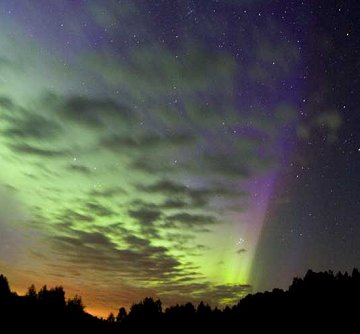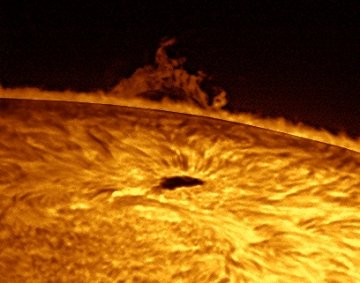 Did you miss the aurora surprise of August 7th? Next time get a wake-up call: Spaceweather PHONE.
Did you miss the aurora surprise of August 7th? Next time get a wake-up call: Spaceweather PHONE.
PLANETS ALIGN: Set your alarm. If you wake up before dawn on Tuesday, Aug. 22nd, you can see three planets lined up with the crescent Moon. Just go outside and look east. It's a beautiful sight, and a nice way to begin the day: sky map.
AURORA BOREALIS: On Saturday night, Aug. 19th, spectacular auroras rippled across Scandinavia. It was the kind of display that could make you dash out of the sauna to grab your camera. Indeed, that's exactly what Markku Hirvenoja did. He dashed out and took this picture of the sky over Vojakkala, Finland:

What caused the display? Around mid-day on August 19th, the interplanetary magnetic field (IMF) tipped south, opening a crack in Earth's magnetic defenses. Solar wind poured in and fueled a geomagnetic storm.
August 2006 Aurora Gallery
DEPARTING SUNSPOT: Goodbye, and thanks for all the snapshots. Photogenic sunspot 904 is approaching the sun's western limb. Shortly, perhaps just hours from now, it will go over the edge and out of sight. Photographer Sylvain Weiller of St Rémy lès Chevreuse, France, took this parting shot on August 20th:

Good news: As 904 vanishes in the west, a new sunspot is emerging in the east. Will it be photogenic, too? Stay tuned.
more images: from Gary Palmer of Los Angeles, CA; from Eric Roel of Valle de Bravo, Mèxico; from Didier Favre of Brétigny sur Orge, France.

